Author: Dr. R. de Graaf
Institution: Department of Interventional Radiology, Clinic of Friedrichshafen, Germany
Summary
This presentation explores the optimal timing for reintervention on occluded venous stents and how to restore blood flow through mechanical thrombectomy, percutaneous transluminal angioplasty (PTA), and other interventional techniques. The study highlights that while recanalization rates of occluded venous stents remain low, appropriate interventions can significantly improve patient outcomes.
Timing of Reintervention
• 4 Weeks After Stent Occlusion: Most occlusions occur within the early stages post-stent placement (typically within 4 weeks). During this period, common interventions include rotational thrombectomy, PTA, and extensive thrombectomy.
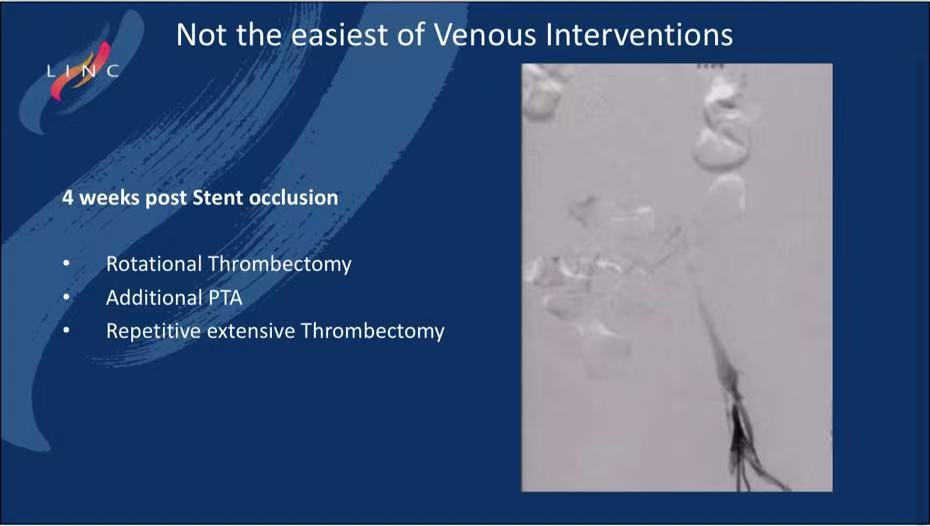
• Surgical Optimization: Before considering reintervention, it’s essential to assess whether the initial surgery was optimized—this includes whether intravascular ultrasound (IVUS) was used, whether all venous inflow issues were addressed, and whether anticoagulation therapy was adequate.
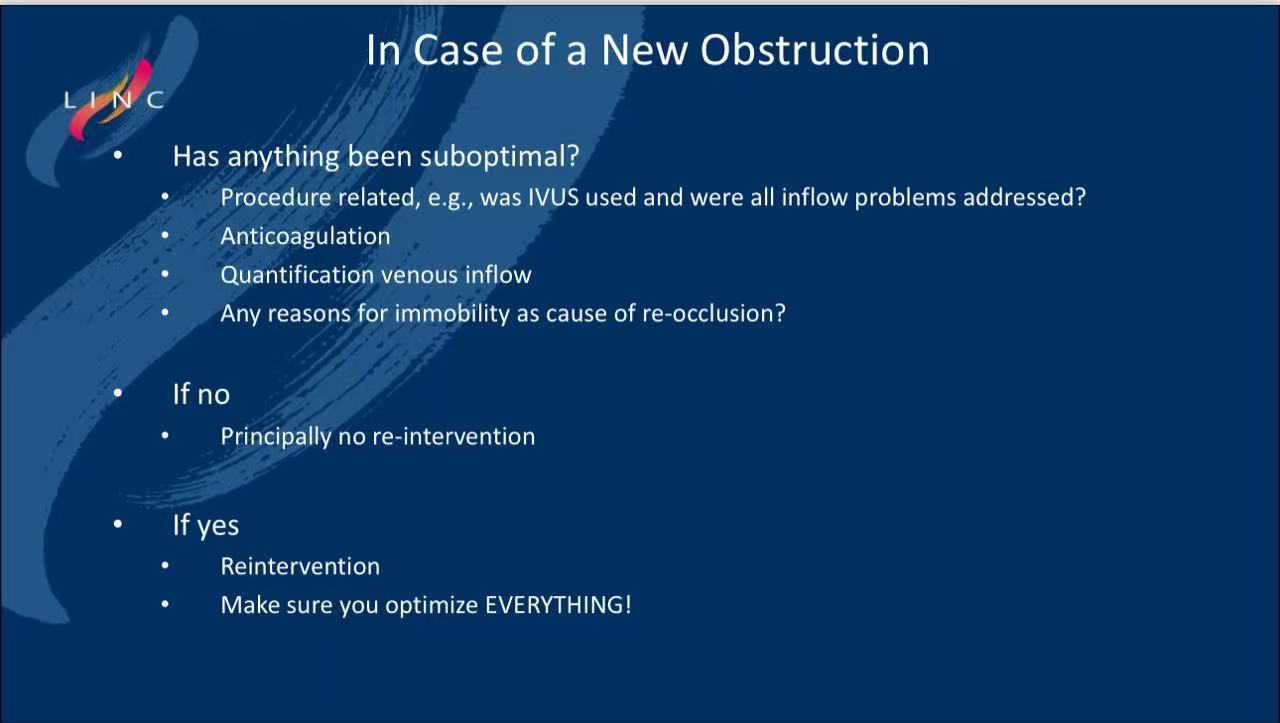
Considerations for Reintervention
• Evaluating the Cause of Reocclusion: If the occlusion is not related to surgical factors or other controllable reasons (such as insufficient venous inflow or patient activity issues), immediate reintervention may not be necessary.
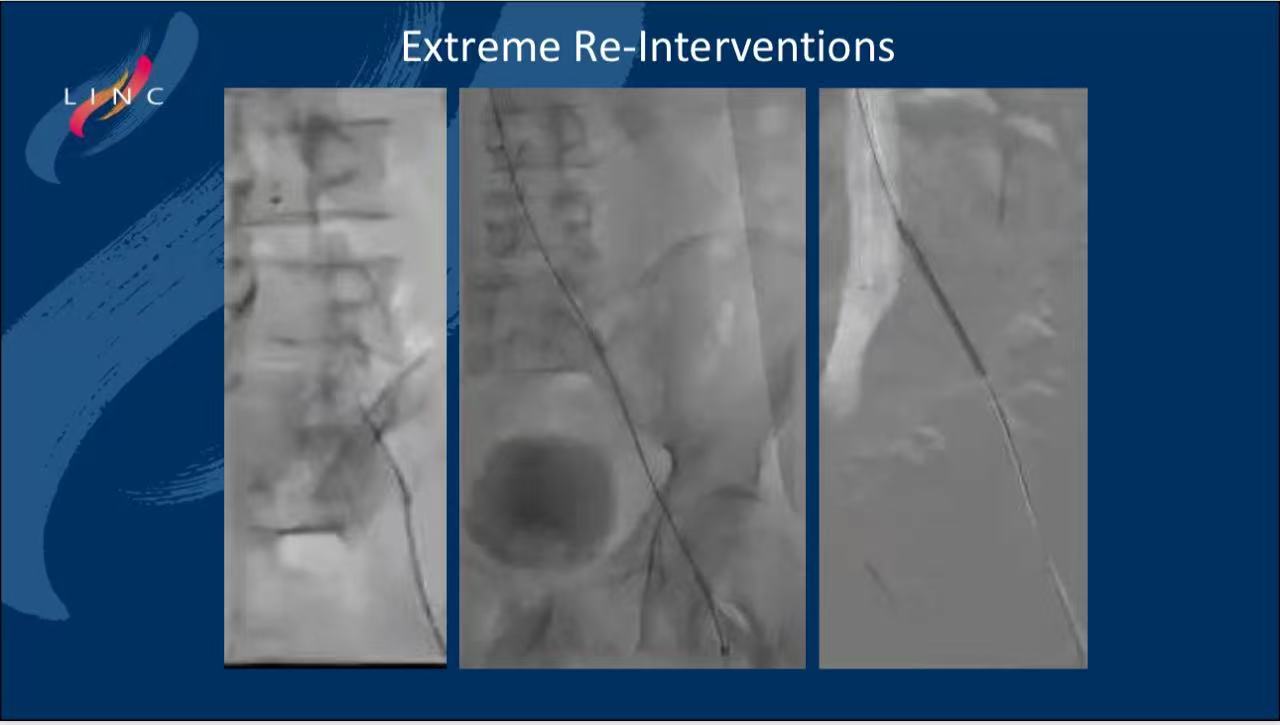
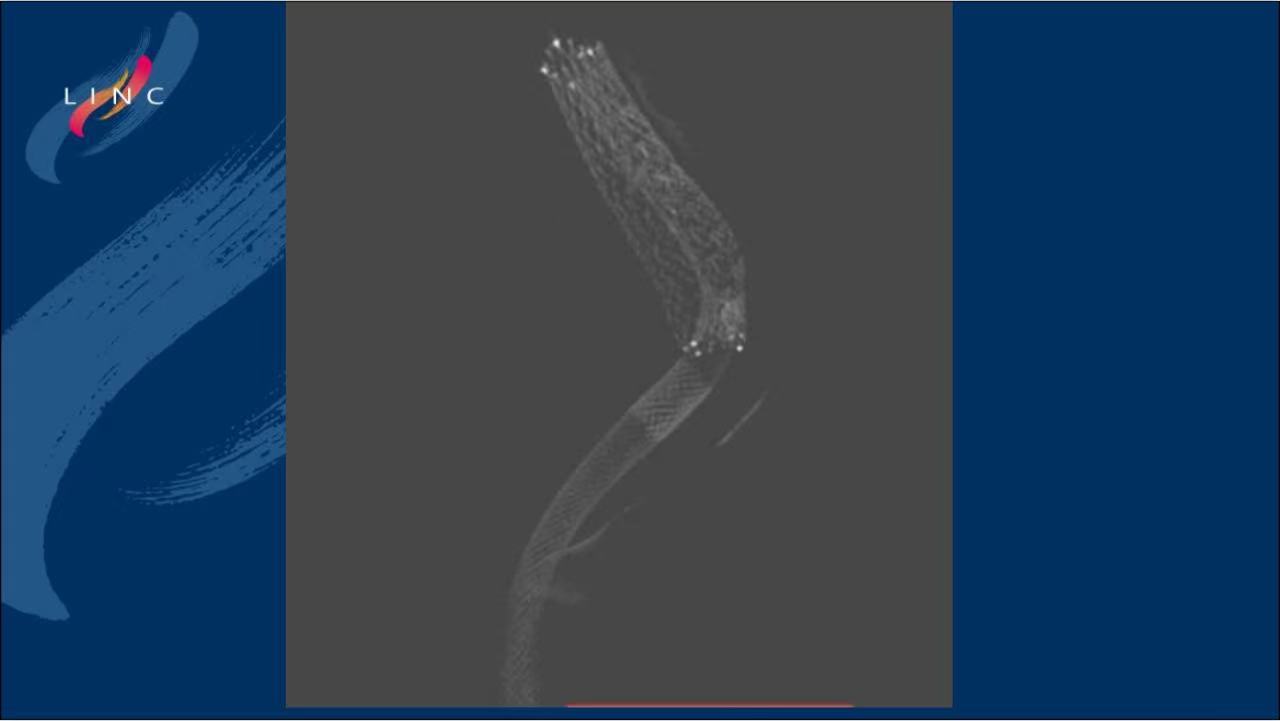
• Reintervention Strategy: If reintervention is deemed necessary, it is recommended to expand the stent, resolve any new obstruction issues, and ensure that every step is carefully optimized.

Complications and Preventive Measures
• Preventing Complications: Most issues are likely to arise during or immediately after the procedure, so the operator must take great care, particularly when withdrawing the catheter sheath to avoid vascular injury.
• Adequate Preparation for Reintervention: Reintervention is generally more complex than the initial procedure, requiring the operator to be well-prepared and to consider all possible complications while selecting the appropriate interventional techniques.
Conclusion
1. Reintervention on occluded venous stents should be carefully considered, with decisions based on a thorough evaluation of the initial procedure’s effectiveness and the patient’s specific condition.
2. Rotational thrombectomy and PTA have shown some efficacy in treating occluded venous stents, but procedural details must be closely monitored to prevent complications.
3. Future research and technological advancements will further improve recanalization rates for occluded venous stents and provide more solutions for complex cases.
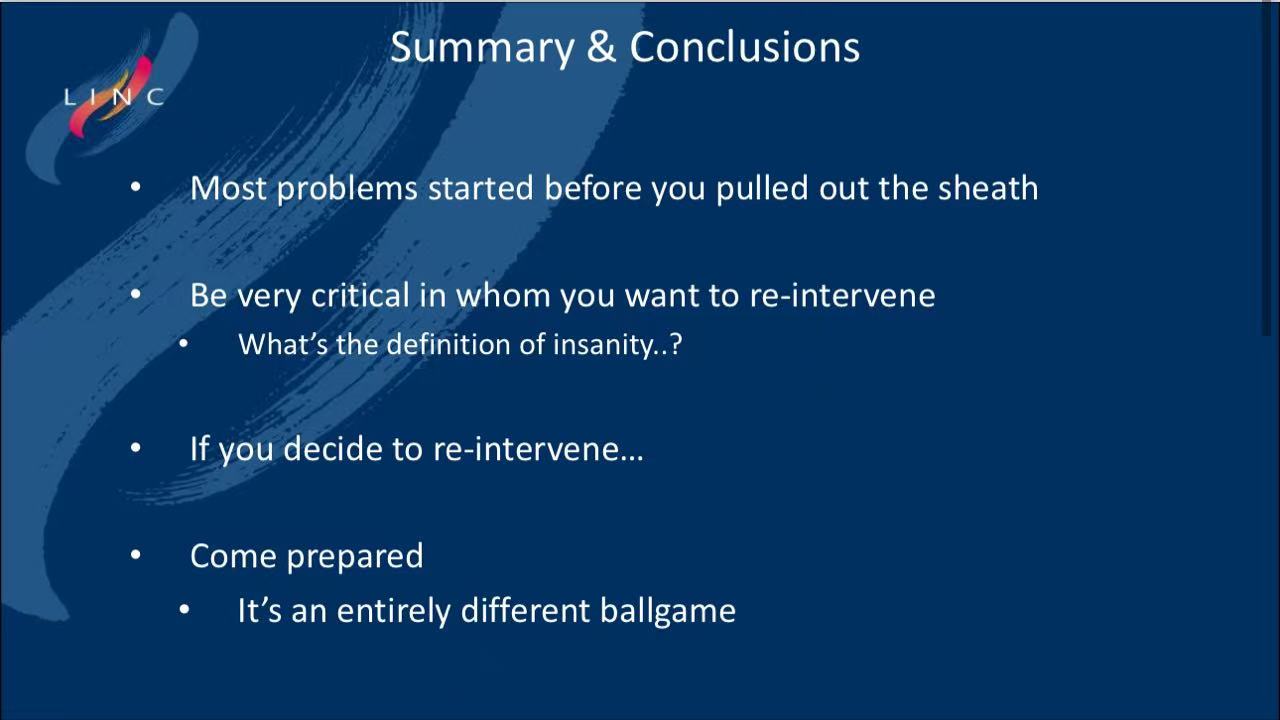
Contact Us
• Email: endovascluar@simtomax.cn
More international information available at:
• Facebook: Vasco Knight
• Instagram: knight_vasco
Let’s safeguard health together and showcase your brilliance to the world!


